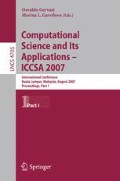Abstract
Quality function deployment (QFD) is a product/service design and improvement tool which is basically a transformation of vague and imprecise customer needs into measurable product/service attributes. This article integrates compromise programming based goal programming into the QFD process to determine to what extent the product/service attributes should be improved. The fuzzy set theory is applied to the model to deal with the imprecise nature of data. Differing from existing QFD applications, our proposed methodology applies analytic network process to evaluate the inner dependencies among customer needs, among product attributes and also the relationships between them. Furthermore, it determines the best product/service in the market as the goal employing compromise programming. Finally, the methodology ends with the goal programming method which consists of this predefined goal and the product/service provider’s budget limitation. A real-world application on e-learning products provided by the higher education institutions in Turkey illustrates the applicability of our proposed methodology.
Access this chapter
Tax calculation will be finalised at checkout
Purchases are for personal use only
Preview
Unable to display preview. Download preview PDF.
References
Wang, Y.S.: Assessment of learner satisfaction with asynchronous electronic learning systems. Information & Management 41, 75–86 (2003)
Chiu, C.M., Hsu, M.H., Sun, S.Z., Lin, T.C., Sun, P.C.: Usability, quality, value and e-learning continuance decisions. Computers & Education 45(4), 399–416 (2005)
Hwanga, G.J., Huanga, T.C.K., Tseng, J.R.C.: A group-decision approach for evaluating educational web sites. Computers & Education 42, 65–86 (2004)
Chan, L.K., Wu, M.L.: A systematic approach to quality function deployment with a full illustrative example. Omega 33, 119–139 (2005)
Zadeh, L.A.: Fuzzy sets. Information and Control 8, 338–353 (1965)
Saaty, T.L.: The analytic hierarchy process: planning, priority setting, resource allocation. RWS Publications, Pittsburgh, PA (1988)
Karsak, E.E., Sozer, S., Alptekin, S.E.: Product planning in quality function deployment using a combined analytic network process and goal programming approach. Computers & Industrial Engineering 44, 171–190 (2002)
Buckley, J.J.: Fuzzy hierarchical analysis. Fuzzy Sets and Systems 17(3), 233–247 (1985)
Saaty, T.L., Vargas, L.G.: Diagnosis with dependent symptoms: Bayes theorem and the analytic hierarchy process. Operations Research 46(4), 491–502 (1998)
Saaty, T.L., Takizawa, M.: Dependence and independence: From linear hierarchies to nonlinear Networks. European Journal of Operational Research 26, 229–237 (1986)
Chan, L.K., Kao, H.P., Ng, A., Wu, M.L.: Rating the importance of customer needs in quality function deployment by fuzzy and entropy methods. International Journal of Production Research 37(11), 2499–2518 (1999)
Zeleny, M.: Linear Multiobjective Programming, pp. 197–220. Springer Verlag, New York (1974)
Bojadziev, G., Bojadziev, M.: Fuzzy Sets, Fuzzy Logic, Applications. In: Advances in Fuzzy Systems & Applications and Theory, vol. 5, World Scientific, Singapore (1995)
Buckley, J.J., Feuring, T.: Linear and non-linear fuzzy regression: Evolutionary algorithm solutions. Fuzzy Sets and Systems 112, 381–394 (2000)
Author information
Authors and Affiliations
Editor information
Rights and permissions
Copyright information
© 2007 Springer-Verlag Berlin Heidelberg
About this paper
Cite this paper
Tolga, E., Alptekin, S.E. (2007). Product Development Process Using a Fuzzy Compromise-Based Goal Programming Approach. In: Gervasi, O., Gavrilova, M.L. (eds) Computational Science and Its Applications – ICCSA 2007. ICCSA 2007. Lecture Notes in Computer Science, vol 4705. Springer, Berlin, Heidelberg. https://doi.org/10.1007/978-3-540-74472-6_68
Download citation
DOI: https://doi.org/10.1007/978-3-540-74472-6_68
Publisher Name: Springer, Berlin, Heidelberg
Print ISBN: 978-3-540-74468-9
Online ISBN: 978-3-540-74472-6
eBook Packages: Computer ScienceComputer Science (R0)

